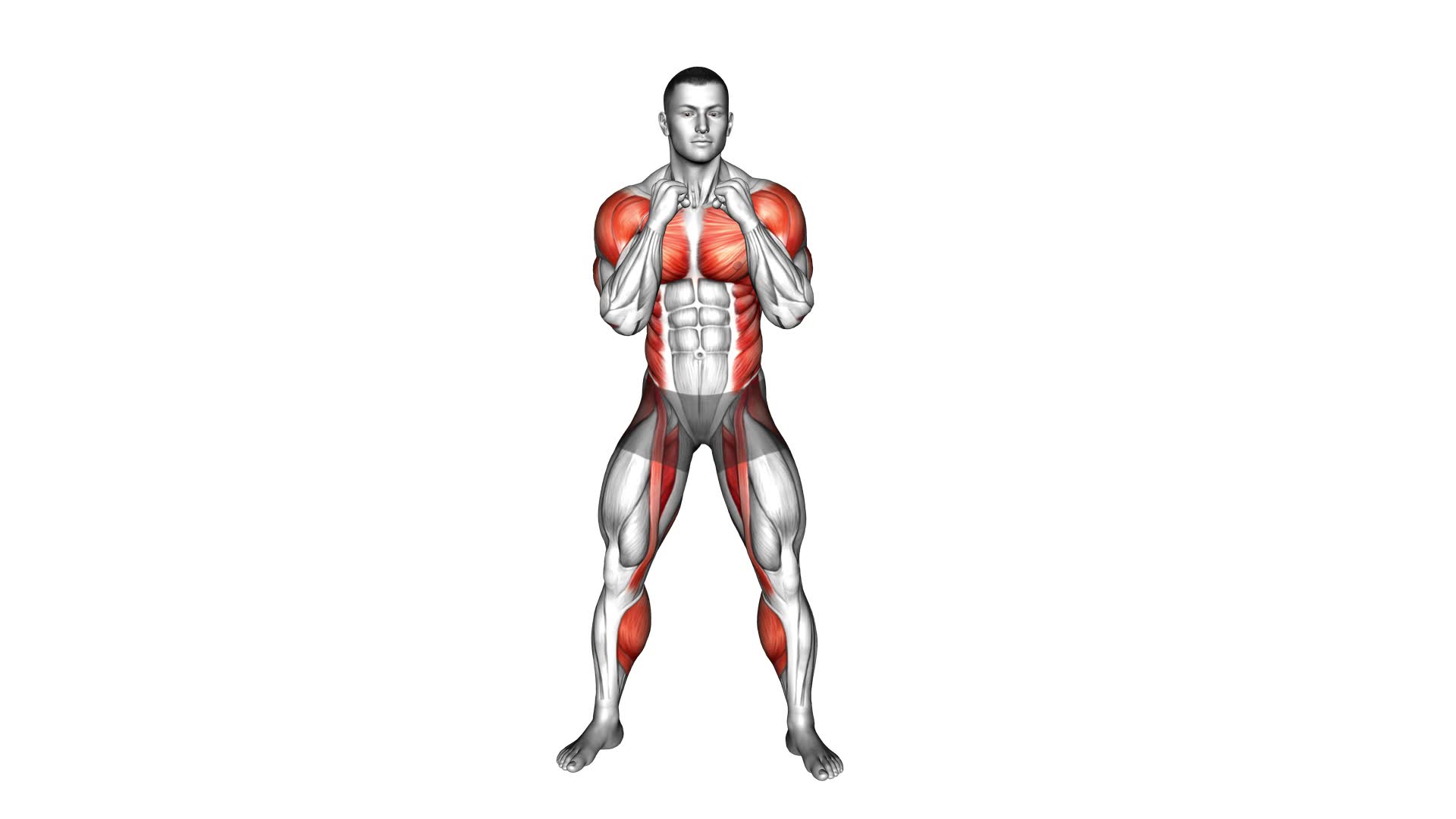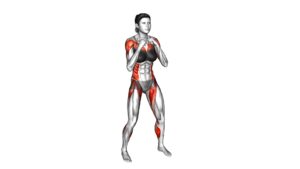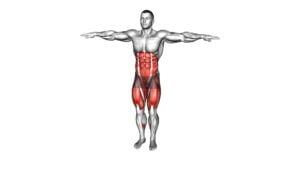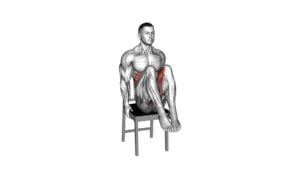Diagonal Punch – Video Exercise Guide & Tips

Are you looking to improve your punching technique? Look no further!
Watch This Exercise Video
In this article, we'll guide you through the Diagonal Punch, a powerful exercise that targets your upper body and core.
With our video exercise guide and helpful tips, you'll learn the proper technique and avoid common mistakes.
Plus, we'll show you variations and progressions to challenge yourself even more.
Get ready to maximize the effectiveness of your punches and take your fitness to the next level!
Key Takeaways
- The diagonal punch engages multiple muscle groups including chest, shoulders, triceps, and core.
- It improves strength and endurance of the targeted muscles.
- The diagonal punch saves time by working multiple muscle groups simultaneously.
- It enhances cardiovascular fitness and burns calories effectively.
Benefits of the Diagonal Punch
You can experience multiple benefits from incorporating the diagonal punch into your workout routine. One of the main benefits is the muscle activation that occurs during this exercise. When you perform the diagonal punch, you engage several muscle groups, including the chest, shoulders, triceps, and core. This exercise not only targets these muscles but also improves their strength and endurance.
Incorporating the diagonal punch into a full body workout can be highly effective. By adding this exercise to your routine, you can work multiple muscle groups simultaneously, saving time and maximizing your workout efficiency. The diagonal punch is a dynamic movement that challenges your upper body and core, helping to improve your overall strength and stability.
Furthermore, the diagonal punch is a great way to improve your cardiovascular fitness. By incorporating it into a high-intensity interval training (HIIT) workout or circuit training, you can elevate your heart rate and burn calories effectively. This exercise also enhances your coordination and agility, as it requires coordinated movements of your arms and legs.
Proper Technique for the Diagonal Punch
To execute the diagonal punch with proper technique, focus on maintaining stability and generating power through controlled movements. Correct body alignment during the diagonal punch is crucial to ensure maximum efficiency and prevent injury.
Start by standing with your feet shoulder-width apart, knees slightly bent, and your weight evenly distributed between both legs. Keep your torso upright and engage your core muscles to stabilize your body throughout the movement.
As you punch diagonally, rotate your hips and shoulders in the direction of your punch, keeping your arm straight and your wrist aligned with your forearm. This alignment allows for optimal transfer of power from your core to your arm, increasing the effectiveness of the punch.
Engaging your core muscles, specifically your abdominals and obliques, is essential for generating power and maintaining stability during the diagonal punch. By activating your core, you create a strong foundation and enhance your balance, enabling you to generate more force and control your movements effectively.
Remember to breathe regularly and exhale forcefully as you punch, further engaging your core and increasing the power behind your strike.
Common Mistakes to Avoid
To avoid common mistakes, focus on maintaining proper body alignment and generating power through controlled movements during the diagonal punch.
One common mistake is leaning too far forward or backward, which can throw off your balance and compromise the effectiveness of the punch. Keep your feet shoulder-width apart and distribute your weight evenly between them.
Another mistake to avoid is neglecting to engage your core muscles. Your core provides stability and helps generate power, so be sure to keep your abdominal muscles engaged throughout the movement.
Additionally, it's important to avoid locking your joints. Keep a slight bend in your knees and elbows to prevent strain and injury.
Lastly, remember to exhale forcefully as you punch, as this can help increase the power and speed of your movement.
By focusing on maintaining correct form and avoiding these common mistakes, you can perform the diagonal punch with optimal efficiency and effectiveness.
Now, let's explore the variations and progressions of the diagonal punch.
Variations and Progressions of the Diagonal Punch
Now, let's explore different variations and progressions of the diagonal punch to challenge and enhance your workout routine.
To take your diagonal punch to the next level, you can try advanced variations that increase the intensity and engage different muscle groups. One advanced variation is the explosive diagonal punch, where you perform the punch with maximum speed and power, focusing on explosive movements to improve your overall strength and coordination.
Another variation is the weighted diagonal punch, where you incorporate equipment such as dumbbells or resistance bands to add resistance and increase the difficulty of the exercise. This helps to build muscle strength and endurance.
Incorporating equipment in diagonal punch workouts not only adds variety, but it also allows you to target specific areas of the body. For example, using a medicine ball while performing the diagonal punch can engage your core muscles even more, providing a greater challenge for your abs and obliques. You can also use a cable machine to perform diagonal punches, which adds constant resistance throughout the movement, helping to build stability and control.
By exploring different variations and incorporating equipment, you can keep your diagonal punch workouts interesting and continually challenge your body.
Now, let's move on to the next section where we'll discuss tips for maximizing the effectiveness of the diagonal punch.
Tips for Maximizing the Effectiveness of the Diagonal Punch
Maximize the effectiveness of your diagonal punch by focusing on proper form and technique. To ensure you're getting the most out of this exercise, it's important to address common misconceptions and incorporate training drills.
One common misconception is that the power of the diagonal punch comes solely from the arm. In reality, power is generated from the entire body, starting from the legs and hips. To maximize power, engage your core and drive your body weight forward as you execute the punch.
Another misconception is that speed is the key to an effective diagonal punch. While speed is important, it shouldn't compromise accuracy and technique. Focus on maintaining proper form throughout the movement, and gradually increase your speed as you become more comfortable and proficient.
To further enhance the effectiveness of your diagonal punch, incorporate training drills into your routine. Shadow boxing is a great way to practice the technique and improve your coordination. You can also use resistance bands or punching bags to add resistance and challenge your muscles. Additionally, practicing with a partner can help you simulate real-life combat situations and improve your reflexes.
Frequently Asked Questions
How Many Sets and Repetitions Should I Do for the Diagonal Punch Exercise?
For the optimal sets and reps of the diagonal punch exercise, it's recommended to start with 2-3 sets of 10-12 repetitions. This will help build strength and improve muscle endurance.
However, it's important to listen to your body and adjust accordingly. If you're rehabilitating a shoulder injury, it's best to consult with a healthcare professional for variations and modifications specific to your condition.
Safety and proper form should always be prioritized.
Can the Diagonal Punch Exercise Be Modified for Individuals With Shoulder Injuries?
If you have a shoulder injury, modifications can be made to the diagonal punch exercise to avoid aggravating your condition.
There are alternative exercises that can target the same muscles without putting strain on your shoulder.
It's important to consult with a healthcare professional or a qualified trainer who can provide guidance on specific modifications and alternative exercises that are safe and effective for individuals with shoulder injuries.
Is It Necessary to Use Weights or Resistance Bands While Performing the Diagonal Punch Exercise?
Using weights or resistance bands while performing the diagonal punch exercise can be beneficial. They add resistance to your movements, making your muscles work harder and increasing the intensity of the exercise. This can lead to improved strength and muscle tone in your arms, shoulders, and core.
Additionally, using weights or resistance bands can help you develop better control and stability during the exercise, enhancing your overall performance and minimizing the risk of injury.
How Long Does It Take to See Results From Incorporating the Diagonal Punch Exercise Into My Fitness Routine?
When can you expect to see results from incorporating the diagonal punch exercise into your fitness routine?
The progression timeline varies for each individual, but typically, noticeable improvements can be seen within a few weeks of consistent practice.
To maximize the benefits, you can incorporate diagonal punches into a full body workout routine.
This exercise engages multiple muscle groups, providing a great cardio and strength training workout.
Remember to consult with a fitness professional to ensure proper form and technique.
Are There Any Specific Warm-Up Exercises That Should Be Done Before Performing the Diagonal Punch Exercise?
Before performing the diagonal punch exercise, it's important to do specific warm-up exercises to prepare your body.
These warm-up exercises can help increase blood flow, loosen up your muscles, and reduce the risk of injury.
By incorporating warm-up exercises into your routine, you can optimize the benefits of the diagonal punch exercise and ensure that your body is ready for the workout ahead.
Make sure to consult a professional or watch an exercise guide for proper warm-up techniques.
Conclusion
In conclusion, the diagonal punch is an effective exercise for improving upper body strength and coordination. By following the proper technique and avoiding common mistakes, you can maximize its effectiveness.
Additionally, incorporating variations and progressions can help you continue challenging your muscles and making progress. Remember to focus on your form and engage your core for optimal results.
Keep practicing and pushing yourself to reach your fitness goals.

Author
Years ago, the spark of my life’s passion ignited in my mind the moment I stepped into the local gym for the first time. The inaugural bead of perspiration, the initial endeavor, the very first surge of endorphins, and a sense of pride that washed over me post-workout marked the beginning of my deep-seated interest in strength sports, fitness, and sports nutrition. This very curiosity blossomed rapidly into a profound fascination, propelling me to earn a Master’s degree in Physical Education from the Academy of Physical Education in Krakow, followed by a Sports Manager diploma from the Jagiellonian University. My journey of growth led me to gain more specialized qualifications, such as being a certified personal trainer with a focus on sports dietetics, a lifeguard, and an instructor for wellness and corrective gymnastics. Theoretical knowledge paired seamlessly with practical experience, reinforcing my belief that the transformation of individuals under my guidance was also a reflection of my personal growth. This belief holds true even today. Each day, I strive to push the boundaries and explore new realms. These realms gently elevate me to greater heights. The unique combination of passion for my field and the continuous quest for growth fuels my drive to break new ground.







